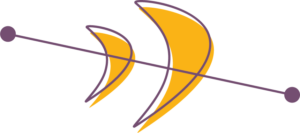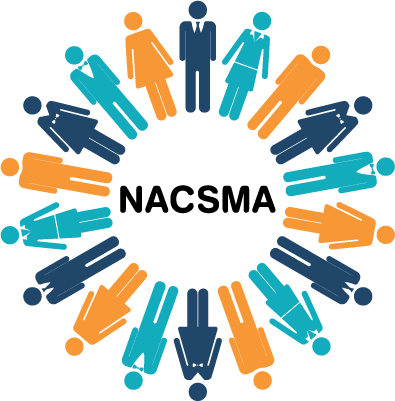SPECIAL CRISIS
Companies in Crisis
Companies dealing with crisis are not new, if anything crisis is becoming a daily occurrence.
There are lots of reasons that send companies into a crisis: scandals about bonuses, auto emissions, and CEO’s making inappropriate comments. Oh, and let’s not forget about the data breaches from credit cards to online dating websites and of course severe weather like Hurricane Sandy and Katrina- it all can cause havoc.
Knowing how to respond to a crisis and being prepared to manage one usually includes the contact center in some way. The contact center becomes the information and communication hub for customers to get answers to questions, information, what actions to take, and how to proceed. Companies today are criticized for responding slowly. When you have your communication and action plan in place mobilizing the contact center can be simple.
Acting slowly looks like a cover up, consumers want speed and decisive action during a crisis. Acting quickly maintains trust with consumers and the company. Be forthcoming in admitting the problem; consumers can deal with bad news but they can’t deal with the anxiety of not knowing how the crisis will impact them and how to resolve it.
Act fast and you can save face, keep customers and your company’s reputation intact. Use your contact center to support customers. Make it easy for them to get answers – long hold times just create more anxiety.

Data Breaches
It seems today that data breaches are the norm.
Every industry has experienced some type of data breach: credit and debit cards, retailers, health insurance providers, hotels, credit reporting agencies, toy makers, and even online dating sites have had user data compromised. Its not a matter of if, it’s a matter of when-when will your company be the target of a data breach? What’s your plan?
Contact centers collect and use customer information every day. What can contact centers do to protect customer credit card information? It is possible to protect it right at the source, which is the agent/customer conversation. Utilizing a contact center platform that can encrypt the call recording is doing your part in protecting consumer data. Today most contact centers record calls, but not all contact center platforms have the encryption capability. Encrypting the audio recording and password protecting it is the industry standard of security. Don’t risk anything less.
Another way to avoid a data breach is to give agents control of the call recording feature. It protects customers by not recording the credit card information. Agents can, with a push of a button “pause” the call recording when it is time to collect credit card information. Thus, avoiding storing any credit card numbers. Hackers can’t capture what you don’t have!
A Perfect World
Here is the ideal scenario. Your BPO uses the same contact center platform you do. This makes it even faster to implement and keeps you in control of your business. You can see all the call activity from your dashboard: call volumes, queues, available agents, disposition’s and pull reports as if those agents were in your site!
Using the contact center chat feature and live monitor feature, supervisors can assist BPO agents as if they were team members. BPO agents can ask company supervisors to “barge in” to take over the call or to make the call a three-way keeping the agent on the line or just “chat” with the agent providing coaching and information. These supervisor features provide the BPO immediate support and support doesn’t get any faster than that!
In a crisis, companies may need the help of additional agents and a BPO is the answer with their flexible business model. Not all BPO’s are the same. They are stateside as well as offshore which begs an entire conversation around how to choose the right BPO for your crisis.

INDUSTRY SERVICE TIPS
1. Contract with your local convention center for a backup location. Bring your laptops and plug into their unlimited data pipe already installed and available. Bring your laptops, log into the contact center platform browser and you are ready to take calls.
2. Select and contract with a BPO as an emergency backup

NEXT STEPS
Today’s contact centers are used to resolve many circumstances that put companies into crisis mode due to scandals, product recalls, data breaches and bad weather. Every day the news report talks about the scandal of the day or the data breach of the day and how thousands of consumers who trusted these companies with personal information and credit card numbers are impacted from these situations.
Managing a crisis begins with a plan that was developed well in advance. It may need to be tweaked to this circumstance but you should have a plan ready to be implemented. It includes a vetted Business Process Outsourcer for additional manpower, time zone and queue support. The BPO uses your contact center platform giving you complete control over the calls, queues, coaching as well as real-time and historical data. You manage this crisis like it’s everyday business from your manager dashboard.
Contact centers can do their part in protecting data by using encryption technology that is provided in the contact center platform. All audio files are encrypted and password protected for the highest level of security. You can also control what is recorded with a “pause” button for agents. They hit the pause button when taking credit card numbers preventing those numbers from ever being stored.
You also have the capability to reroute calls from contact centers that are experiencing some type of outage due to weather. You appreciate how the hosted contact center software automatically detects a break in the line and reroutes the calls to other queues.
Product Recalls
Product recalls make the phone ring! Consumer products such as:
– Over-the-counter drugs
– Cell phone battery recall
– Food; meat and vegetables contaminated
– Food manufacturers; pet food, cheese, cereal, various meat products
– Automobiles; tires, airbags, brakes, child safety features
– Electronics, computer chips, batteries
– Toys; cycle helmets, infant toys
Either the FDA, or if cars are involved, the National Highway Traffic Safety Administration (NHTSA) will issue mandatory product recalls if they have evidence of products putting the consumer in any danger. Companies can also volunteer to recall products to avoid heavy fines, consumer lawsuits and a tarnished reputation. Either way a product recall is a product recall and now the consumer needs and wants information.
When it’s about safety people want information; what should you do if you have a product that is being recalled? What is the risk if you keep using the product? Will it be replaced or fixed? Where can you take the product? Consumers want answers and fast. Companies will set up contact centers to handle these types of calls. Companies can expand an existing contact center or hire a Business Process Outsourcer (BPO) to take the extra volume of calls or use a blend of both.
Volume is the key determinant. How many calls are expected to come in once the recall is announced?

When will the bulk of these calls come in? What questions will callers have? What is the process and procedure to handle these callers? Using a workforce management tool can help you plan how many agents you will need and how to schedule them.
Because you never know when a crisis will happen, top organizations have a contingency plan in place including a BPO in their hip pocket. With a pre-vetted BPO you can be quick and nimble and move to implementation of training agents on policy, procedure, the types of questions they will get as well as what actions to take much faster. If you wait until a crisis to vet BPO’s, making this decision under crisis pressure will be a hasty one at best. Plan ahead and have a couple of options in your back pocket for when you need them.
Another strategy to handle the extra volume is Real-time Schedule Optimization. With a proper workforce management application, you can conduct mass schedule adjustments with 48 hours’ notice. On a near real-time basis, immediate exercise of extra hours, voluntary go home, cancel or add elective offline time, extend breaks times and perform break/lunch optimization to address staffing gaps or overages.
When you and your BPO use a hosted contact center platform you can easily set up shop in an alternate location within hours. Convention halls make great alternate locations because they have a quality infrastructure all set up. Bring your laptop and login and you are ready to take calls.
Weather Situations
Hurricane Sandy impacted not just New York, but everyone who did business with businesses in New York City. Weather can put both consumers and companies into crisis. New Yorker’s who lost homes called into their mortgage lenders regarding mortgages on homes that were destroyed, questions on flood insurance and FEMA benefits. Contact centers all over the country handled thousands of calls. A special contact center was created by the Department of Labor to help people navigate all the help; FEMA, unemployment benefits, the New Jersey Relief Fund, and more. The 2-1-1 call centers were a lifeline during and after the hurricane by connecting people to shelters, food, and water. Contact centers have an important role in weather crises.
Weather impacted the contact centers that were based in New York and New Jersey – these businesses were shut down because they were unable to take calls. Many businesses went dark for days because their back up plan was to have agents work from home. These companies were thinking snowstorms when they developed the back-up plan. They never imagined their employee’s homes would be knee deep with water. When you work on a cloud-based platform, rerouting calls has never been easier.
Call traffic automatically is rerouted in a moment’s notice to a redundant contact center in a geographic location that is not interrupted by weather can provide your customers consistent service. It is amazing how many companies still only have one location. Those companies are still married to an old PBX. Companies moving to the cloud have the capability to stand up a second contact center faster with less expense than ever possible before. When moving traffic from one PBX to another it always comes with a charge. For every leg the carrier moves the traffic, there is another penny per minute added. This can get expensive. In a cloud based contact center there are no extra charges. With cloud based contact center software you can easily move call traffic to other locations from the manager’s desktop. Moving call traffic is simple and cost effective.
VIDEO FROM OUR EXPERTS



INDUSTRY EXPERTS

Company 1

Company 2

Company 3
NETWORKING FOR CONTACT CENTER PROFESSIONALS
ABOUT NACSMA
NACSMA brings together like-minded professionals focused on advancing the customer contact industry and creating career growth.
BEST-IN-CLASS
Management of a best-in-class contact center sites require the continuous review of Agent Sourcing Models, Organizational Training and Management Development Programs.
NACSMA MEMBERSHIP
NACSMA is a professional, non-profit association whose members represent customer contact organizations and the vendors who support them.
IMPLEMENTATION
When a contact center organization expands to an additional site or requires new space, the steps to properly implement are unique to each organization but do have standard phases.
